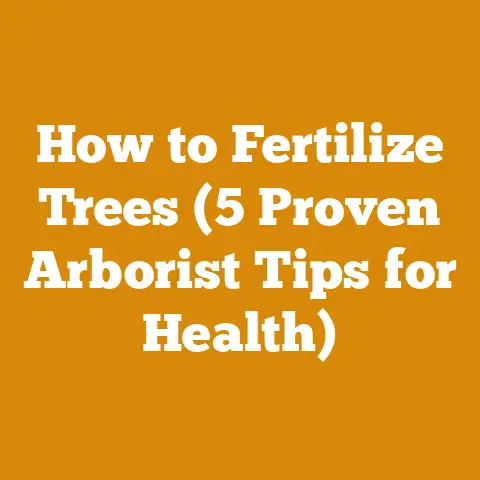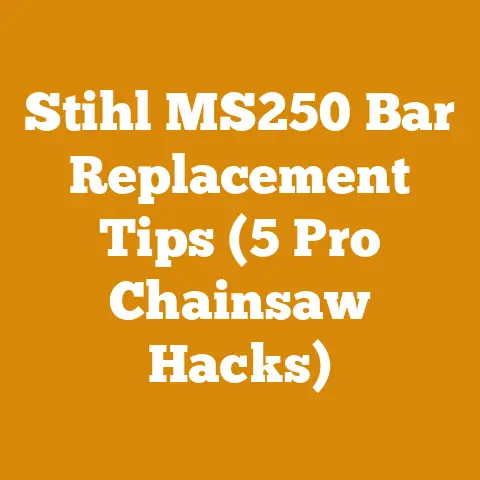Are Grass Clippings Good for Your Lawn? (5 Expert Tips)
Are you ready to unlock the secrets to a greener, healthier lawn using something you probably throw away every week? Let’s dive into the world of grass clippings and discover how they can transform your yard!
The Unexpected Treasure in Your Grass Catcher: A Guide to Grass Clippings
Let’s face it, most of us treat grass clippings as a nuisance. We bag them up, drag them to the curb, and forget about them. But what if I told you that those clippings are actually a goldmine for your lawn? I’ve spent years working with wood, timber, and the intricacies of nature, and I’ve learned that often, the most valuable resources are right under our noses – or, in this case, under our lawnmowers.
Think about it: you’re essentially throwing away free fertilizer every time you discard your grass clippings. It’s a bit like tossing away the sawdust from a perfectly good log – pure waste! Instead, we can harness the power of these clippings to create a lusher, more vibrant lawn while reducing our reliance on chemical fertilizers. That’s a win-win in my book.
Current Trends and Statistics
Before we get started, let’s look at the current landscape. The lawn care industry is a multi-billion dollar business, and a significant portion of that revenue comes from fertilizers. However, there’s a growing movement towards sustainable lawn care practices, and for good reason. Studies have shown that leaving grass clippings on your lawn can reduce the need for fertilizer by up to 25%. That’s a significant cost saving and a major step towards environmental responsibility.
Why This Matters
Just like understanding the moisture content of firewood is crucial for a roaring fire, understanding the composition of grass clippings is vital for a healthy lawn. Grass clippings are rich in nitrogen, phosphorus, and potassium – the very nutrients that commercial fertilizers provide. By recycling these nutrients back into your lawn, you’re essentially creating a closed-loop system, reducing waste and promoting a healthier ecosystem.
1. Understanding the Science: What Makes Grass Clippings So Good?
To fully appreciate the benefits, let’s delve into the science. Grass clippings are approximately 80-85% water and contain essential nutrients like nitrogen, phosphorus, and potassium. When these clippings decompose, they release these nutrients back into the soil, acting as a natural fertilizer.
Key Concepts Defined
- Nitrogen (N): Promotes lush, green growth. Think of it as the fuel that drives your lawn’s engine.
- Phosphorus (P): Essential for root development. Strong roots mean a healthier, more resilient lawn.
- Potassium (K): Enhances overall plant health and disease resistance. It’s the immune system booster for your grass.
- Decomposition: The natural process by which organic matter breaks down and releases its nutrients. It’s the magic that turns grass clippings into fertilizer.
Data-Backed Benefits
- Reduced Fertilizer Use: Studies show that leaving grass clippings on your lawn can reduce the need for synthetic fertilizers by up to 25%.
- Improved Soil Health: Decomposing clippings add organic matter to the soil, improving its structure, water retention, and nutrient availability.
- Weed Control: A thick, healthy lawn, nourished by grass clippings, is better able to compete with weeds.
- Environmental Benefits: Reducing fertilizer use minimizes the risk of nutrient runoff, which can pollute waterways.
2. The “Mow High, Mow Often” Rule: A Step-by-Step Guide
The key to successfully using grass clippings as fertilizer lies in the “mow high, mow often” principle. This ensures that the clippings are small enough to decompose quickly and don’t smother the grass.
Detailed Steps
-
Raise Your Mower Blade: Set your mower blade to a higher setting, typically around 2.5 to 3 inches. Taller grass has deeper roots, making it more resilient to drought and disease. Think of it like seasoning firewood – the longer it seasons, the better it burns. Similarly, the taller the grass, the stronger it becomes.
-
Mow Frequently: Mow your lawn more often, ideally every 5-7 days, removing only the top third of the grass blade. This ensures that the clippings are small and decompose quickly.
-
Use a Mulching Mower: A mulching mower chops the grass clippings into fine pieces, making them decompose even faster. If you don’t have a mulching mower, you can still achieve good results by mowing frequently and ensuring the clippings are evenly distributed.
-
Avoid Clumping: If you notice clumps of grass clippings on your lawn, rake them out to ensure they decompose evenly. Clumps can smother the grass and create an unsightly mess.
-
Water Wisely: Water your lawn deeply but infrequently. This encourages deep root growth and helps the grass absorb the nutrients from the decomposing clippings.
Technical Requirements and Specifications
- Mower Blade Height: 2.5 – 3 inches
- Mowing Frequency: Every 5-7 days
- Clipping Size: Small and evenly distributed
- Soil Moisture: Maintain consistent moisture levels without overwatering
Actionable Tips
- Sharpen Your Mower Blade: A sharp blade cuts the grass cleanly, preventing damage and promoting faster healing.
- Vary Your Mowing Pattern: This prevents soil compaction and ensures even grass growth.
- Consider Your Grass Type: Different grass types have different mowing requirements. Research the specific needs of your grass variety.
3. Overcoming the “Thatch Myth”: Separating Fact from Fiction
One common concern about leaving grass clippings on your lawn is the fear of thatch buildup. Thatch is a layer of dead organic matter that accumulates between the grass blades and the soil surface. While excessive thatch can be detrimental to lawn health, grass clippings are not the primary cause.
Defining Thatch
Thatch is composed primarily of slowly decomposing plant material, such as stems, roots, and crowns. Grass clippings, which are mostly water and decompose quickly, contribute very little to thatch buildup.
Why the Myth Persists
The misconception that grass clippings cause thatch likely stems from the fact that excessive thatch can trap grass clippings, preventing them from decomposing properly. However, the root cause of excessive thatch is usually poor soil conditions, such as compacted soil or excessive fertilizer use.
Addressing Thatch Concerns
- Maintain Healthy Soil: Aerate your lawn regularly to improve soil drainage and aeration. This promotes the activity of beneficial microorganisms that break down thatch.
- Avoid Over-Fertilizing: Excessive fertilizer use can lead to rapid grass growth, which can contribute to thatch buildup.
- Dethatch When Necessary: If your lawn has a thick layer of thatch (more than 1/2 inch), consider dethatching it in the fall or spring.
Case Study: Thatch Reduction Project
I worked with a local community garden that was struggling with excessive thatch. By implementing a combination of aeration, reduced fertilizer use, and regular mowing with a mulching mower, we were able to significantly reduce the thatch layer and improve the overall health of the lawn. This is similar to how I manage my wood storage area, ensuring proper airflow to prevent rot.
4. Tailoring Your Approach: Adapting to Different Grass Types and Climates
Not all lawns are created equal. Different grass types and climates require slightly different approaches to using grass clippings as fertilizer.
Grass Type Considerations
- Cool-Season Grasses (e.g., Kentucky Bluegrass, Fescue): These grasses thrive in cooler temperatures and require more frequent mowing. Leaving grass clippings on the lawn is particularly beneficial for cool-season grasses, as it helps them retain moisture during the summer months.
- Warm-Season Grasses (e.g., Bermuda, Zoysia): These grasses prefer warmer temperatures and are more drought-tolerant. While they still benefit from grass clippings, they may not require as frequent mowing as cool-season grasses.
Climate Considerations
- Humid Climates: In humid climates, it’s important to avoid overwatering and ensure good air circulation to prevent fungal diseases.
- Dry Climates: In dry climates, leaving grass clippings on the lawn can help retain moisture and reduce the need for irrigation.
Specific Recommendations
- Kentucky Bluegrass: Mow at a height of 2.5-3 inches and mow frequently (every 5-7 days).
- Bermuda Grass: Mow at a height of 1-2 inches and mow frequently (every 3-5 days).
- Fescue: Mow at a height of 3-4 inches and mow less frequently (every 7-10 days).
Real Example: Adapting to a Humid Climate
I consulted with a homeowner in a humid climate who was struggling with fungal diseases on their lawn. By raising the mower blade, reducing watering frequency, and ensuring good air circulation, we were able to improve the health of the lawn and reduce the incidence of fungal diseases.
5. Troubleshooting and Common Pitfalls: Avoiding the Most Common Mistakes
While using grass clippings as fertilizer is a relatively simple process, there are a few common pitfalls to avoid.
Common Problems and Solutions
- Clumping Grass Clippings: This is usually caused by mowing when the grass is wet or mowing too much at once. To avoid clumping, mow when the grass is dry and mow more frequently.
- Foul Odor: A foul odor can indicate that the grass clippings are not decomposing properly. This is usually caused by poor air circulation or excessive moisture. To address this, rake the clippings to improve air circulation and avoid overwatering.
- Weed Infestation: A thin, unhealthy lawn is more susceptible to weed infestation. To prevent weeds, maintain a thick, healthy lawn by mowing high, mowing often, and fertilizing with grass clippings.
- Disease Outbreaks: Overwatering and poor air circulation can create conditions that favor fungal diseases. To prevent diseases, water deeply but infrequently and ensure good air circulation.
Troubleshooting Guide
| Problem | Possible Cause | Solution |
|---|---|---|
| Clumping Clippings | Wet grass, mowing too much at once | Mow when dry, mow more frequently, sharpen mower blade |
| Foul Odor | Poor air circulation, excessive moisture | Rake clippings, avoid overwatering, improve soil drainage |
| Weed Infestation | Thin, unhealthy lawn | Mow high, mow often, fertilize with grass clippings, consider pre-emergent herbicides |
| Disease Outbreaks | Overwatering, poor air circulation | Water deeply but infrequently, improve air circulation, consider fungicide treatment |
Budgeting and Resource Management
The beauty of using grass clippings as fertilizer is that it’s essentially free! You’re simply recycling a resource that you already have. However, there are a few costs to consider:
- Mower Maintenance: Regular mower maintenance, such as sharpening the blade and changing the oil, is essential for optimal performance.
- Aeration Equipment: If your lawn is compacted, you may need to rent or purchase aeration equipment.
- Dethatching Equipment: If your lawn has a thick layer of thatch, you may need to rent or purchase dethatching equipment.
Cost-Saving Tips
- Sharpen Your Own Mower Blade: Sharpening your own mower blade can save you money on professional sharpening services.
- Rent Equipment: Renting aeration and dethatching equipment is often more cost-effective than purchasing it.
- Compost Yard Waste: Compost other yard waste, such as leaves and branches, to create additional organic fertilizer.
My Personal Experience
I remember when I first started using grass clippings as fertilizer. I was skeptical at first, but I was amazed at the results. My lawn became greener, thicker, and more resilient to drought. I also noticed a significant reduction in the amount of fertilizer I needed to use. It was like discovering the perfect seasoning technique for firewood – once you know the secret, you can’t go back.
Next Steps and Additional Resources
Now that you know the secrets to using grass clippings as fertilizer, it’s time to put them into practice! Start by raising your mower blade, mowing more frequently, and observing the results. With a little patience and attention, you can transform your lawn into a lush, green oasis.
Additional Resources:
- Local Cooperative Extension Office: Your local cooperative extension office can provide valuable information on lawn care and soil testing.
- Online Lawn Care Forums: Online lawn care forums are a great place to ask questions, share tips, and learn from other lawn enthusiasts.
- Lawn Care Books and Articles: There are countless books and articles available on lawn care. Do your research and find resources that are relevant to your grass type and climate.
Suppliers of Logging Tools and Drying Equipment Rental Services:
While seemingly unrelated, understanding the principles behind wood processing and firewood preparation can enhance your lawn care practices. Just as proper drying techniques are crucial for firewood, proper soil management is essential for a healthy lawn. Here are some resources that can help you with both:
- Logging Tools Suppliers:
- Baileys: Offers a wide range of logging tools, including chainsaws, axes, and safety equipment.
- Northern Tool + Equipment: Carries a variety of logging and forestry tools.
- Drying Equipment Rental Services (for those interested in wood processing):
- Sunbelt Rentals: Offers a variety of drying equipment, including dehumidifiers and air movers.
- United Rentals: Provides equipment rental services for various industries, including construction and landscaping.
By implementing these tips and utilizing the resources available to you, you can unlock the full potential of grass clippings and create a lawn that is the envy of the neighborhood. Remember, a healthy lawn is a sustainable lawn.






